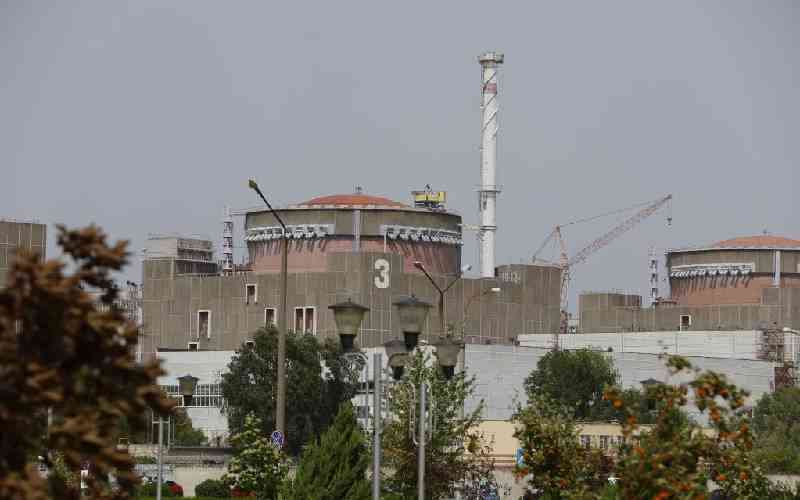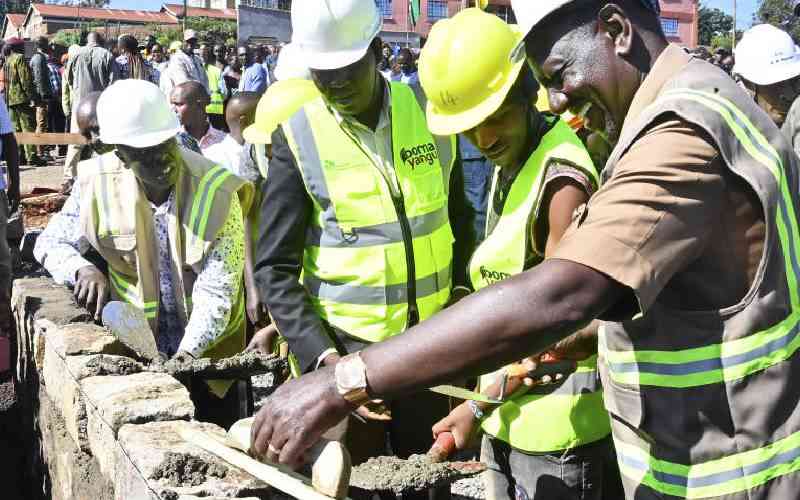Media accounts express doubt on Kenya Pipeline Company’s capacity to handle the expected volumes of crude oil in the region.
As a forward-looking public entity, we do acknowledge that the oil and gas sector is changing very fast and presents various challenges and opportunities for growth and expansion.
It is in this light that the company has developed a new 10-year Corporate Strategic Plan dubbed Vision 2025, with emphasis on not just the pipeline network, but also on storage facilities.
The company has mooted new projects that are geared towards harnessing resources to enhance pipeline system capacity, integrity, security, efficiency and expanding into new business lines and markets with a view to creating a premier oil and gas company.
Indeed, one of the key initiatives that KPC has initiated is the acquisition of the Kenya Petroleum Refineries Ltd (KPRL) facility in Mombasa to boost its storage potential.
As the company positions itself as a market leader in oil and gas in this region, investment in crude oil transportation and storage is central to our thinking.
Indeed, KPC is soon taking over KPRL after the Government of Kenya agreed to pay half a billion shillings owed to India’s Essar Energy, effectively acquiring Essar’s 50 per cent stake in the refinery.
Through KPC, the Government intends to convert the refinery into a storage facility as the country gears up for commercial oil production.
KPRL has 45 tanks for various products with a total networking capacity of over 484 million litres. Seventeen of these tanks are for refined products, which can be heated and converted into crude oil storage tanks.
Out of these, five tanks with a total capacity of 54 million litres are already fully integrated into the KPC system in Mombasa.
This demonstrates that the KPRL facility can act as a storage hub and a gateway to the outside market as more modern and bigger infrastructure is developed, granting KPC more capacity in handling crude oil.
Besides readiness to handle crude oil, KPC continues to invest heavily in enhancing the pipeline’s pumping capacity to increase volumes to meet rising demand for refined petroleum products.
Prominence has been placed on diversification in visible emerging business opportunities in the region, expansion of existing infrastructure, investing in the company’s ICT and security and securing the pipeline’s integrity through regular maintenance.
One of the major investments that KPC is currently undertaking is the construction of a new 20-inch pipeline to replace the ageing 14-inch Mombasa-Nairobi pipeline.
The current Mombasa-Nairobi line is replete with existing pipeline system constraints that cannot meet current demand and so the new 450-kilometre pipeline, one of the Vision 2030 flagship projects, is expected to meet demand for petroleum products until the year 2044.
Stay informed. Subscribe to our newsletter
According to the Petroleum Institute of East Africa (PIEA), Kenya’s national demand for petroleum products in 2010 was 3.4 billion litres but in 2014, it stood at 4.4 billion litres.
Regionally, the combined demand for Rwanda, Uganda, Burundi, Eastern DRC, South Sudan and northern Tanzania in 2010, according to Shengli Engineering & Consulting Company (SLECC), stood at 2.4 billion litres but in 2014, it was 2.8 billion litres. This phenomenal growth calls for new thinking.
Besides the new Mombasa-Nairobi pipeline, KPC is also constructing a 10-inch 122-kilometre pipeline from Sinendet in Nakuru County to Kisumu, which is intended to increase volumes of product moved by an additional 360 thousand litres per hour.
The Sinendet-Kisumu pipeline is a response to inadequate supply of petroleum products in Kisumu due to limitations of the existing six-inch-diameter pipeline laid in 1992.
The company has also embarked on a new phase of upgrading loading and storage facilities to meet new demand by introducing more efficiency in her operations and processes. In this vein, and in line with international best practice, the construction of a modern bottom truck-loading facility is underway in Eldoret.
The Nakuru-Kisumu pipeline and the new Eldoret truck-loading facility is a twin approach by KPC to cater for the rising demand for refined petroleum products not only in western Kenya but also in Rwanda, Uganda, Burundi, Eastern DRC, South Sudan and northern Tanzania.
With a bigger pipeline network coming up, KPC is putting up additional storage tanks in the Nairobi Terminal to more than double the storage capacity of diesel and super petrol from the current 100 million litres to 233 million litres.
Besides this, KPC is currently in talks with key private investors with a view to acquiring their facilities in Mombasa and Nairobi to act as additional storage and truck-loading facilities.
In western Kenya, the company plans to competitively engage private sector players with a view to encouraging them to invest in storage facilities to correspond with a national plan to devolve the pipeline network to strategic counties.
This will take petroleum products closer to the people, hence bringing down the cost.
 The Standard Group Plc is a
multi-media organization with investments in media platforms spanning newspaper
print operations, television, radio broadcasting, digital and online services. The
Standard Group is recognized as a leading multi-media house in Kenya with a key
influence in matters of national and international interest.
The Standard Group Plc is a
multi-media organization with investments in media platforms spanning newspaper
print operations, television, radio broadcasting, digital and online services. The
Standard Group is recognized as a leading multi-media house in Kenya with a key
influence in matters of national and international interest.
 The Standard Group Plc is a
multi-media organization with investments in media platforms spanning newspaper
print operations, television, radio broadcasting, digital and online services. The
Standard Group is recognized as a leading multi-media house in Kenya with a key
influence in matters of national and international interest.
The Standard Group Plc is a
multi-media organization with investments in media platforms spanning newspaper
print operations, television, radio broadcasting, digital and online services. The
Standard Group is recognized as a leading multi-media house in Kenya with a key
influence in matters of national and international interest.









